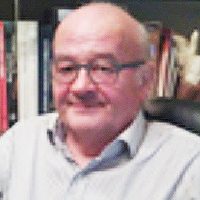Table of Contents
The Essential Role of Esophagogastroduodenoscopy Prior to bariatric surgery
Published on: 20th June, 2018
OCLC Number/Unique Identifier: 7814987530
We read with interest the case report entitled “Dieulafoy’s Lesion related massive Intraoperative Gastrointestinal Bleeding during Single Anastomosis Gastric Bypass necessitating total Gastrectomy: A Case Report” published in Archives of Surgery and Clinical Research b Ashraf Imam et al. [1]. We appreciate the authors for managing such a complicated case and for sharing their experience but, we have some conflict about the management, and we wanted to add some comments regarding the importance of EGD before bariatric surgery.
In the published case, no preoperative EGD was done and the authors mentioned that Dieulafoy’s Lesion is very unlikely to be diagnosed in the routine endoscopy. We agree with that statement but, it is not a good reason to eliminate this diagnostic modality before surgery. Though controversial, there is growing evidence which supports the importance of routine EGD prior to obesity surgery [2]. This may alter the surgical or medical plan for the obese patient, Furthermore, we have a different opinion about this patient’s management and, we wanted to share this with the authors.
In the reported patient, after control of the bleeding during gastrojejunal anastomosis, the OAGB(One Anastomosis Gastric Bypass) concluded successfully but, the patient was re-intubated because of severe bloody emesis at the recovery room and then an arterial bleeding point in the posterior wall of the lesser curvature close to the esophagogastric junction was found. This does not illustrate the reason for the huge gastric remnant seen at the laparoscopy because it was at least 200 cm far from the pouch and backwards flow of blood is very unlikely. Our opinion is, due to 90% diagnostic rate and about 75-100% success in hemostasis, on-table EGD should have a more highlighted role in treatment of the reported case [3].
Even if the pouch was dilated, it was not rational to perform a total gastrectomy in such an unstable patient and a laparoscopic pouch resection followed by Roux- en-y esophagojejunostomy could be a better choice in our point of view. Moreover, Feeding gastrostomy could be a better option rather than feeding jejunostomy, if needed.
In summary the essential role of endoscoy for screening the patients before bariatric surgery and, for the management of complications (though controversial), should always be kept in mind by bariatric surgeons.
Scrotal Hydroceles not associated with Patent Processus Vaginalis in Children
Published on: 2nd May, 2018
OCLC Number/Unique Identifier: 7666304079
Background: After the closure of patent processus vaginalis (PPV) in boys with indirect inguinal hernia (IIH) or hydrocele, large scrotal hydroceles can occur on rare occasions despite the complete occlusion of internal inguinal ring (IIR). We present some cases that may help to explain the cause of this rare occurrence.
Materials: During last 14 years, six boys exhibited non-communicating large scrotal hydroceles (2 right, 1 left, 3 bilateral) among 352 children who underwent laparoscopic repair for hydroceles. Ages ranged from 7 months to 15 years with a median of 12 years. Five of them had a history of repair for hydrocele or IIH prior to the definitive surgery and one boy underwent an initial operation.
Results: In all the patients, laparoscopic inspection at the definitive surgery revealed completely closed IIRs. One infant with primary hydroceles was found to have large hydroceles bulging into the peritoneal cavity. All the patients were treated with subtotal removal of the sac without any recurrence. Marked thickness of the sack walls with abundant lymph vessels was characteristic histopathological findings.
Conclusions: The complete occlusion of the PPV does not always prevent the recurrence of hydrocele through alternative pathogenesis. The pathological findings of resected specimens suggested a disturbance in lymph flow in the testicular system. The subtotal removal of the sac is the treatment of choice. Diagnostic laparoscopy prior to a direct cut-down approach to the neck of the seminal cord is advisable to identify non-communicating hydroceles to avoid further impairment of lymph drainage around the IIR.
Role of Helicobacter pylori in causing repeated Reinfection from Oral cavity in Chronic Prostatitis
Published on: 10th January, 2018
OCLC Number/Unique Identifier: 7338804767
Introduction: The refractoriness in treatment of chronic prostatitis (CP) could be due to repeated infection. This reinfection could be caused by Helicobacter Pylori present in human saliva.
Methods: The oral cavities seem to be the important reservoirs for the reinfection. The transmission from these reservoirs could be stopped by avoiding contact between male urethera and saliva.
Results: Three patients suffering from refractory symptoms of CP were advised to avoid contact between their urethera and saliva and were prescribed antibiotics. All patients had complete response.
Conclusions: The oral cavity serve as reservoir of microorganisms (H.Pylori) which infects patient’s urethera repeatedly in patients of CP.

HSPI: We're glad you're here. Please click "create a new Query" if you are a new visitor to our website and need further information from us.
If you are already a member of our network and need to keep track of any developments regarding a question you have already submitted, click "take me to my Query."




















































































































































